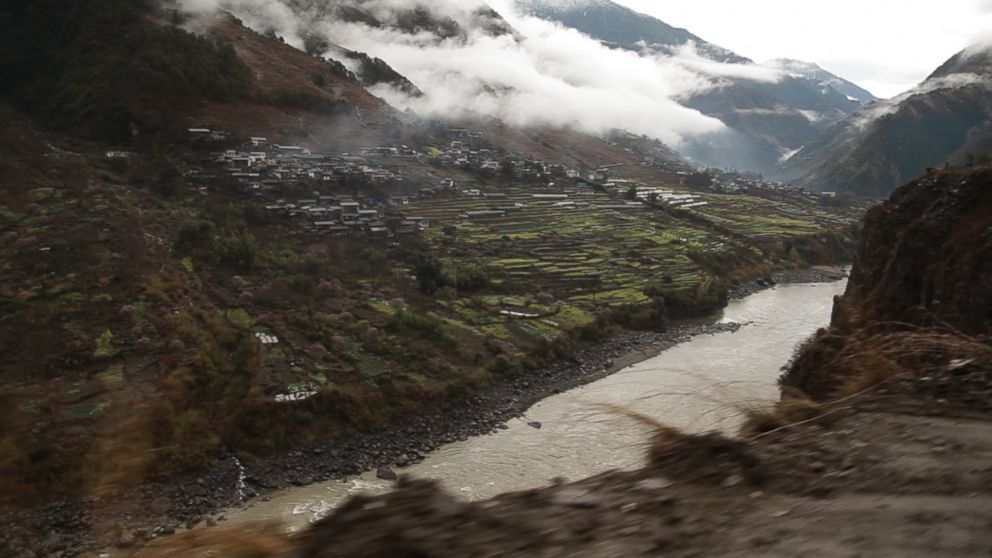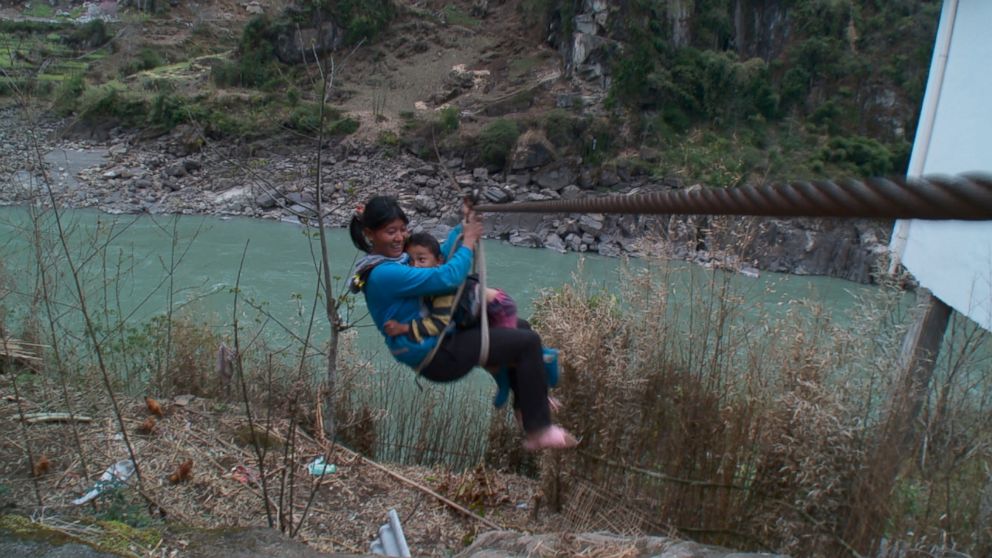The Last Generation of Zipliners: This Small Chinese Village May Have to Give Up Centuries-Old Tradition
Small Chinese village may have to give up centuries-old tradition.
— -- For untold generations, villagers, young and old, living along the torrent Nujiang, or “Nu River” in China’s southwestern Yunnan province, have used makeshift ziplines to crisscross its banks.
But as the new China of high-speed trains, highways and unbridled construction encroaches on this remote corner of the country, these ziplines are quickly disappearing, making way for bridges. The villagers who live along cliffs of the Nujiang may be the last generation of zipliners.

The Nujiang is the last free-flowing, undammed river in Asia. It carves its way from the Tibetan plateau through China, Myanmar and Thailand before emptying into the Andaman Sea. The Nujiang river valley cuts so deep that the area is sometimes known as China’s Grand Canyon, presenting a challenge for farmers who need to cross.
The communities that live along the Nujiang are mostly members of the Lisu ethnic minorities, a hill tribe that have ziplining in their blood.
When asked about using the ziplines now, villagers of the Lisu ethnic minority pointed to the government-built bridges that are quickly replacing their traditional form of mode of transportation. Decades earlier the local provincial government had helped upgrade ziplines from bamboo-made cables to steel but today many of the harnesses are homemade.
In one village called Boa, locals zipped back and forth as they took their kids to school. Others were heading to jobs or to pick up supplies. For the time being, the ziplines remain the fastest way to get across the river from Boa.

The Chinese government have plans to build at least four new hydro-electric dams on the untouched river, although environmental advocates are pushing back. Although the plan has yet to be full approval, preparation for dams has already started as earth-moving machinery dot the winding road that runs along the Nujiang.
A 90-year-old grandmother named Qiu Maqian told "Nightline" that she grew up in Boa and has used the ziplines since the 1930s, back when the lines were made of bamboo. Metal lines replaced the bamboo in the 1970s. She said she will not be around to watch the changes, and that ziplining has been a big part of her life but she said she knows that will not last much longer.
A 17-year-old Boa villager named Pu Shaheng may be the last generation of Nujiang zipliners, but he told "Nightline" that he feels life will be easier when bridges and highways come into town.
Pu then paused and added the idea of the ziplines going away made him sad because it’s a lifestyle his kids and generations to come will never know.




